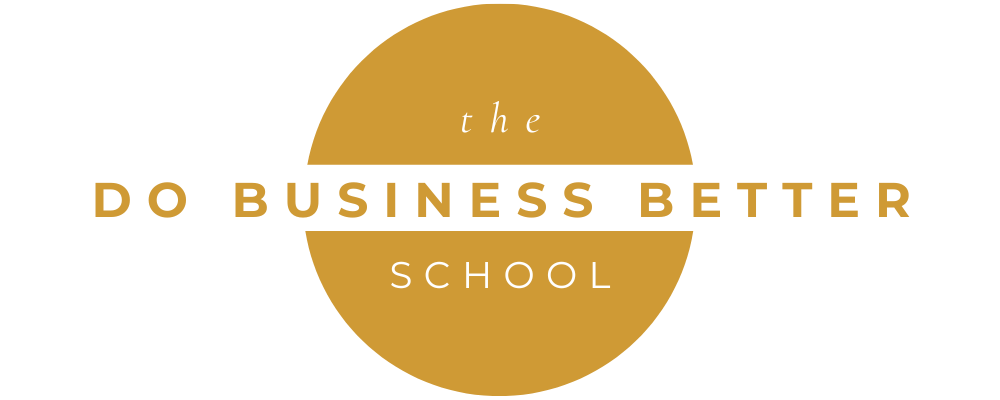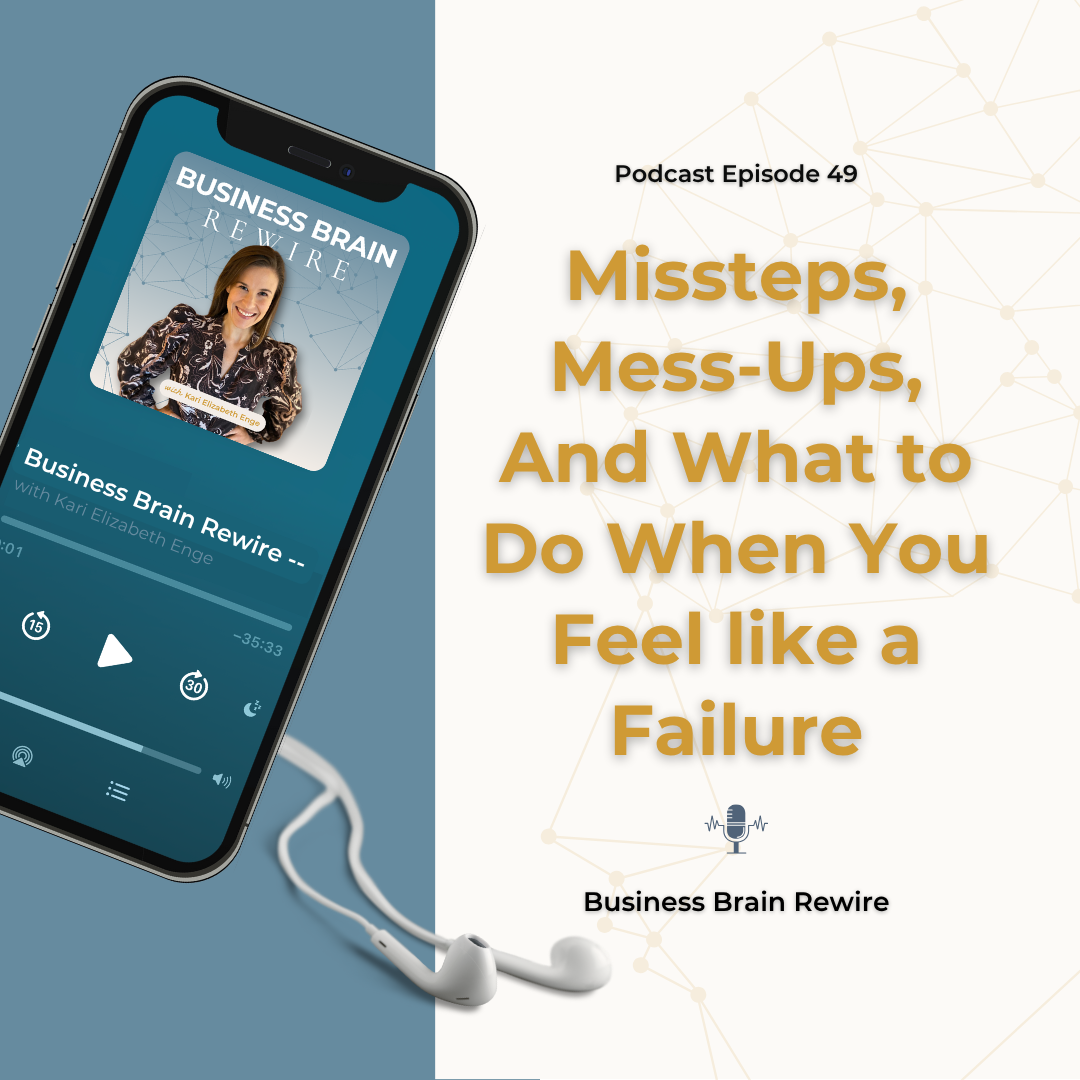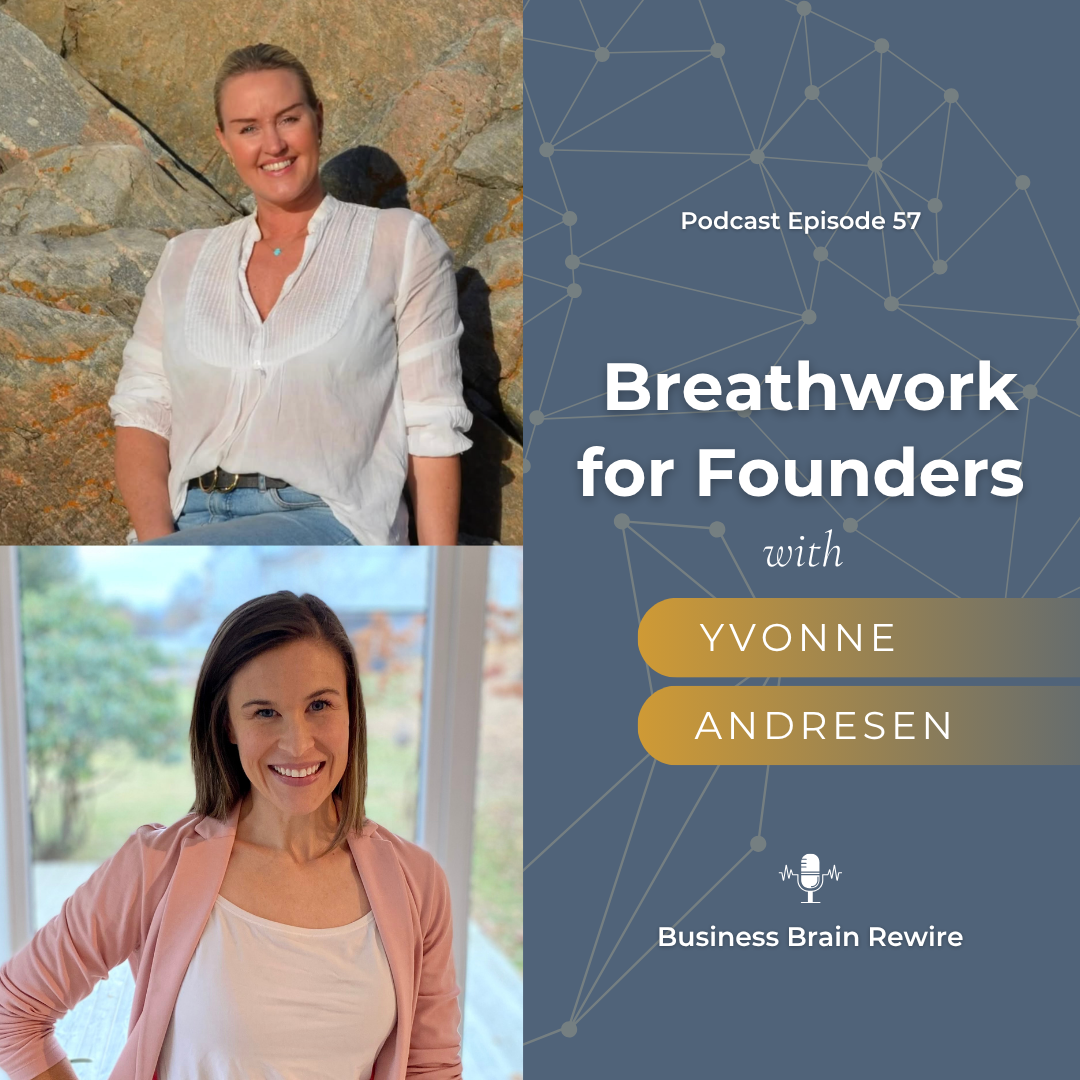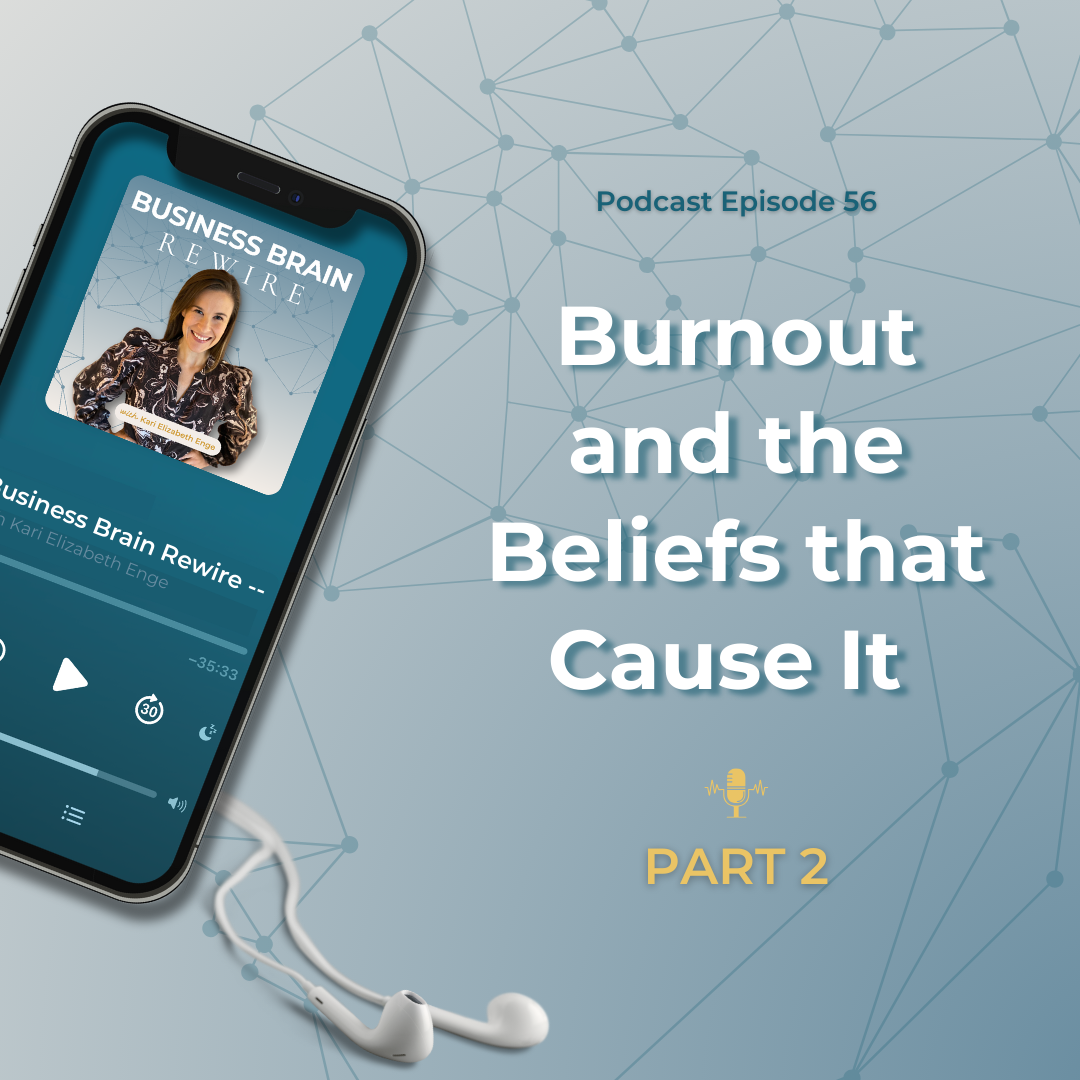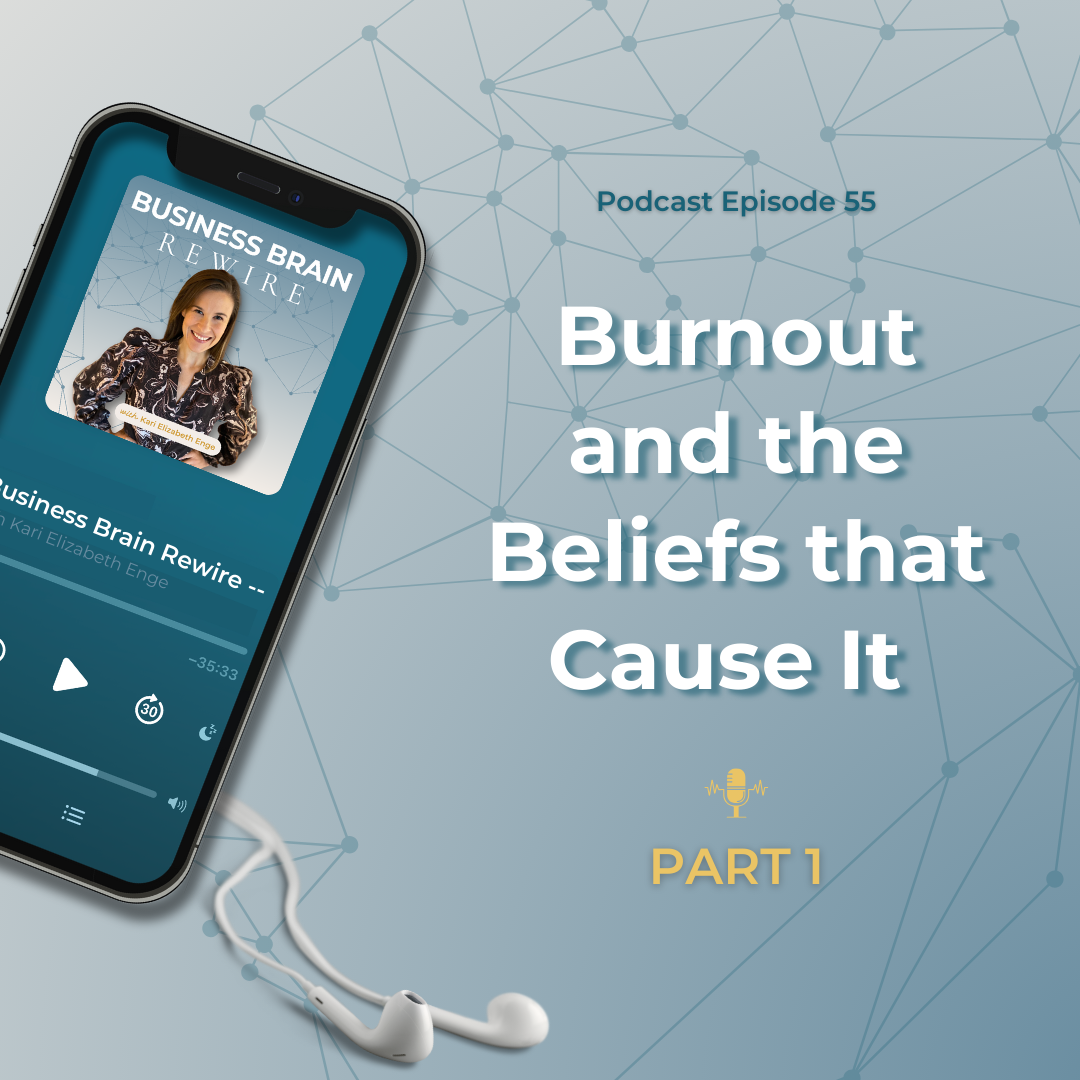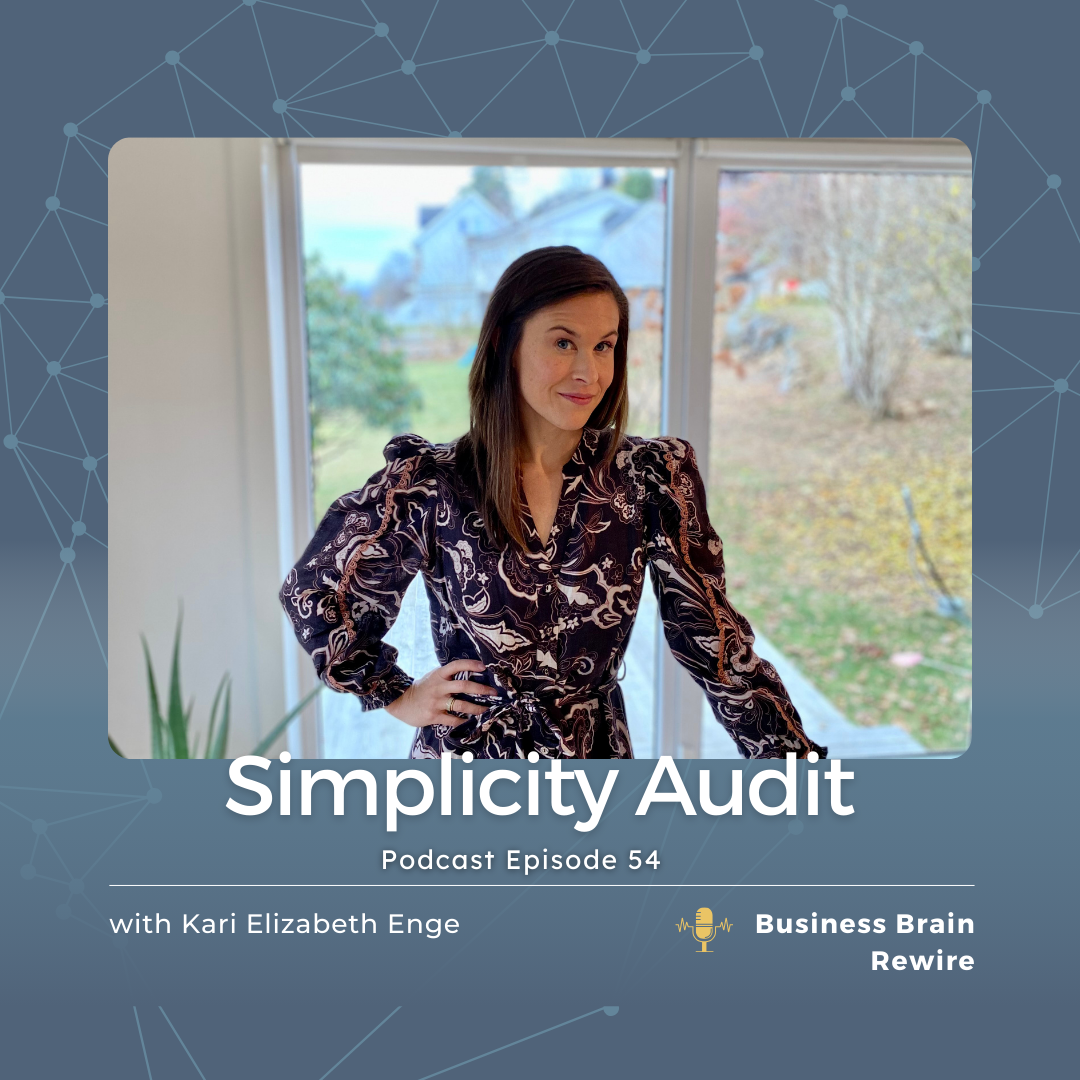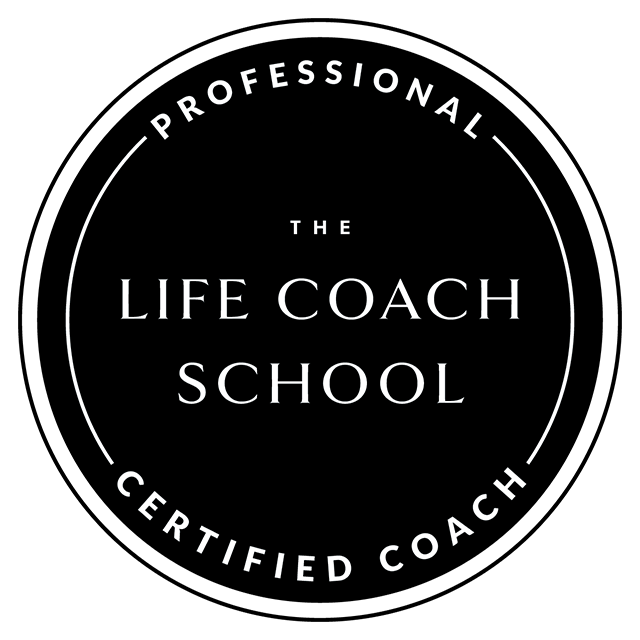Sometimes, even when you’re trying to lead with care and authenticity…
Something lands the wrong way.
That happened to me recently, and it hit hard.
In this week’s episode, I pull back the curtain on a moment that caught me off guard — one that left me feeling ashamed, misunderstood, and a little bruised.
But instead of pushing past it or spiraling in self-doubt, I followed the three-step process I always teach my clients for how to process failure, grow from it, and return to center — with more grace, capacity, and clarity than before.
If you’ve ever felt the sting of rejection, the ache of misalignment, or the pain of being misunderstood — this episode is for you. It’s an honest, real-time example of what it means to lead from values, even in the messy moments.
✨ In this episode, you’ll learn:
- A nervous-system-safe approach to receiving difficult feedback
- What to do when cultural differences cause business tension
- How to process failure without letting shame take over
- Why increasing your emotional capacity is essential for greater impact
- How to turn mistakes into your greatest leadership teachers
Failure happens to all of us. But when we meet it with honesty, courage, and compassion — it becomes one of the most powerful growth tools we have.
If this episode had you nodding along, thinking yes, this is exactly what I need—then don’t stop here. Let’s take these strategies and turn them into action with a step-by-step framework. Proven science-backed tools. A clear path to growing with more impact AND ease: Go to dobusinessbetterschool.com/join to learn more
Transcript
[00:02:23] So. What I would love to do is to first just tell you what happened in my business. I’m gonna peel back the curtain, or pull back the curtain and just kind of tell you the story and then I’m gonna tell you the steps that I took in order to process this and gain value out of it. Recently, I guess earlier in the spring, I taught an accelerator program. I was teaching mindset for founders who were raising capital for their very first time. So I was teaching a lot about how to have a positive mindset, a helpful mindset when you’re going through a capital raise, how to handle your nervous system in big scary moments where you’re pitching to investors or, you know, you have these questions that are thrown at you from a panel of investors and how to calm your nervous system and to feel more comfortable doing that, and how to make it so you feel like it’s an authentic conversation instead of something that has a lot of pressure related to it. I also taught about how to just handle the pressure of a capital raise in general, right? Because it is a stressful time with a deadline and it really ramps stress up for founders. That’s what I was teaching on and I spent six hours with the group. So we did a three hour workshop over the course of two days virtually. It was a great workshop. I gave a ton of value and when it came to the end, me and the sort of the facilitator of the accelerator programs said, you know, we can’t pay you that much. That’s how accelerator programs are set up, but you’re more than welcome to share your offer with the group, following your workshop. So for the last two minutes of the workshop, I shared a little bit about how I work and I just said, I’ll send you an email with more information if you’re interested. Then I sent an email to the group, just one email saying, thank you so much. If you’d like to implement this, here’s how you can do that. I put bullet point of features and a coupon code for everyone, just for that group and said wishing you all the best. So a couple of months goes by and I don’t get any takers on that, which was surprising to me because normally when I spend a lot of time with a group, there’s someone who would like to have help with implementing it or further support. That’s sort of a normal part of my business model. But of course, it happens, so I didn’t really think anything of it. Then I reached out to the coordinator, ’cause I hadn’t heard from him and said, Hey, it would be great to just reconnect, get your feedback from the group about how it all went and, you know, to see if I can continue to support your cohorts in the future. We get on the phone earlier this week and long story short, he called me salesy. Then he proceeded to tell me that you know, Americans are so different than Norwegians and he wish it wasn’t that way and he wish it was more of a balance, not the American way, but not the Norwegian way, which was very kind. Kind of came across super blunt with the delivery of like you’re salesy. Then proceeded to have body language that was like, I don’t wanna talk to you anymore. So we wrapped up the call and in that moment that was when the failure hit me. Obviously you can imagine, if you’re getting that kind of feedback as a purpose-driven founder who teaches authentic sales and how to have an impactful business and to serve the world with your work. This was like a really big blow. So at that moment, I just leaned straight into the three steps that I share with everyone that, that I work with.
[00:06:26] The first step. Immediately when I got off the phone, I felt that my nervous system was really triggered. You’ll feel that. You’ll feel the energy in your body. You’ll either feel tears or anger, or you’ll feel the tempo of your heart. Sometimes you’ll also feel the immediate impulse to start replaying what just happened in your mind, thinking about what you said, what they said, and rehashing out all the details to try to find how they’re right or how you are, right? So there can be this mental replay that your brain will automatically start to jump into. The other thing that your brain will do is start to go straight into the inner critic. The shame. The you aren’t good enough kind of dialogue. This is sort of the patterns that we’ll find when we have experienced negative feedback or a failure in the moment. Oftentimes our brain will get really active and the first step is actually just noticing that and trying to turn down the volume on the thoughts because they will just spin around and keep you stuck. I promise the first step is to recognize those thoughts, but turn down the volume and then allow yourself to feel physically. Because the first step is actually to process the failure. In order to do that, we actually have to feel the emotion, which is not so fun. So that’s my caveat. This does not feel good. But whatever you don’t feel all the way through in your body, whatever you don’t let kind of course through will get stored and get trapped. We actually know this from a neuroscience perspective. You can also read about it in many psychology and neuroscience books, maybe the best one is the Body Keeps Score, if you wanna check that one out. We know that it’s really unhelpful and unhealthy for the body to go straight back to the brain and start the spin instead of allowing our negative emotions to be felt physically. So that is the first step, and this is what I did. I got off the phone and I felt the nudge or like the desire to just go pick up my kids and just shove it under the bus and just be like, ugh, and kind of replay and justify and do that whole mental dialogue in my mind. But instead, I sat at the computer at the table and I just felt it. I just felt it in my body and it felt like someone had just gut punched me. Okay. It felt heavy. It felt hard. It felt like shame. And I just had to cry really big. Right. Just to feel it. And when I did that, the most important thing that you wanna keep in mind when you do this is to stay away from shame language and the negative inner talk while you do this. Because that’s actually what makes this pretty impossible or makes this process too difficult, is if there is a strong inner critic, a strong shame-based narrative going on while you’re just feeling the physical emotion.
[00:10:00] If this is hard for you, this is something that you can get help with to just feel it physically without any storytelling going on in your mind in the moment. Because we can actually just feel a raw emotion without going into the story of it in our mind, and that’s what I did. One of the things that really helps me to do this, if I find my brain going into the storytelling ’cause it will do it, is to just sit with a thought that helps me. I just go back to, ugh, yeah, that felt hard. This feels hard. Ooh, this feeling is big. And I just stick with, yeah, like of course that felt hard and kind of validate myself for just like having the emotion as a normal response to just what occurred. Right? So instead of saying you shouldn’t feel bad or you should feel bad, it’s just yeah, this is hard. I also kind of pair that with, I am safe to feel this. I’m capable of feeling this. So that I feel really equipped and I feel really stable and secure and grounded in order to let these big, like energetic waves, these big physical sensations come through my body. ‘Cause that’s what it feels like, right? There’s like stuff going on in the physical body when you feel an emotion. That is actually the first step.
[00:11:29] Now, I would love to say that it goes through and you feel all good afterwards, but that’s not normally what happens when you’ve experienced a big failure because there is shame and embarrassment there. Oftentimes in business, we feel failure and shame when someone else has been a part of it. Right. Like if we’re just doing it all alone, it’s, it doesn’t sting that bad. But when it’s happened in front of other people, that’s when it can really have this big effect on our nervous systems. This makes sense, right? We are relational human beings that need to be in a sense of belonging with our community to be in safe attachment with caregivers as we’re growing up. To be in attachment with a safe, grounded family. We don’t wanna be outside of the tribe. So it just makes total sense that this would be a really hard thing to, to process and to deal with. So we want to really have that dialogue of, I’m safe to feel this sensation. This is really hard. Like we get that this is a hard feeling, but it doesn’t go away all at once. So this is just step one, but a very important step. Here’s the reason why I think it’s so important, and neuroscience backs this up. We have a certain capacity, at any given moment for how much negative emotion or how much emotion we can actually tolerate in our system. What we want to do as founders is to constantly be expanding the amount we can hold, because what that does is it creates safety for more success, more visibility, more responsibility, and more feedback coming from larger audiences. This helps you to grow your business without your yourself kind of self imploding or self-sabotaging. This is a really important thing to do, to expand your capacity and actually to practice feeling failure, feeling negative feedback, feeling really visible, feeling very vulnerable, feeling embarrassed, feeling exposed. I know it sounds crazy, but all successful people with large platforms, they have a large capacity to feel this, and every time they stretch themselves in this area, they open up more impact that is available to them. I think that that’s really important for all of us to consider is that if we wanna make a really positive impact in the world, if we want to talk about a really important social cause, or we wanna help with a really important social issue, then we are going to be visible. We are going to have feedback, and we are going to make visible public mistakes, and our nervous system needs to be primed and in shape for that. We have to go to the emotional gem. This is such a great way to do that when you have all these little, small failures in your business. It is setting the stage for all the impact you can have in the world. So that’s how I like to think about it. I’m like, okay, this is hard, but I’m capable of feeling this and there is a value in kind of going to the emotional gym right now. Lifting these weights, even though it feels really hard to feel this sensation in my body. I just feel it for as long as I can handle it or just as long as I can kind of focus on it before my brain will be like, eh, okay, let’s go do something else. You’ll have a certain limit and then you’ll just need to go on with your day for a little bit. So don’t overthink this, but just try to just sit with the emotion for a little while to exercise and to show your body, hey, we can be with this emotion. It’s actually safe. I’m not dying. I haven’t been rejected. I’m just feeling this sensation.
[00:15:53] So this is the second step. The first one is to recognize just the tendency to go into your brain and to rationalize or overplay or, you know, punish yourself with strong inner talk. The second one is to allow and to feel the sensation of the negative emotion.
[00:16:11] The third step that I always do is I come back around after a little while to start investigating what happened, and in this particular case, I didn’t do this right away. I like to sit on it and feel it for a couple of hours or even a day or two before I start to investigate it. I think I did it like the next day. I spent the rest of the day feeling pretty crappy. I could feel the heaviness in my body. It was pretty intense, like even when I just picked up my kids from school and we were just playing in the garden. I did do a really good job, that afternoon, now that I think about it, of getting into nature, taking off my shoes and just being barefoot in the grass, trying to just reconnect with the present surroundings to show my body, Hey, you’re safe. You’re safe. This is good. I tried to giggle and laugh and co-regulate with my kids, and I also really shared vulnerably with my husband on the couch that night. I had a good cry with him. I explained it to him and he validated where I was at. That co-regulation was also an important part of this step. If you can lean on loved ones during this feeling stage, that’s also really helpful. But after a couple of hours, or I think it was the next day, I started to investigate what was going on. Instead of ruminating and going back and forth of like who’s right and what happened and doing this typical type of dialogue where we need to find a winner and a loser. How I want you to think about investigating, is investigating the kind of the glasses or the pattern or the process in which you’re looking at it.
[00:18:04] So let me explain what I mean. What I could tell is that when I was thinking about it, I was kind of thinking that he was against me and that he didn’t have his best interest in mind. Like he was just, I don’t like you anymore. You’re out, you’re salesy. We don’t wanna do business with you. So instead of going into my brain of like, yeah, but you’re not right and you did this and you’re also at fault. What I wanna notice here when I investigate is, oh yeah, I am thinking that you are taking this stance. I’m thinking that there is this defense happening, this against mentality, this rejection mentality, and this is always, always coming from attachment wounds. Okay, so I know that that sounds super heavy, but what I mean by that is it’s coming from how we were disciplined and raised as children. It’s coming from a adolescent experience, maybe with a friend group or with a boyfriend or whatever. It’s coming from a past experience because of how we have implicit learning in our minds where our brains find a pattern for how things work, and then it copy and paste that pattern onto everything that looks similar.
[00:19:31] So in business, when we feel like we have rejection or someone is pushing us out and doesn’t have our best interest in mind. Or wants to hurt us or compete with us, or who’s jealous or who doesn’t want us to contribute. This is coming from the past, and so we wanna be really mindful to notice whenever these patterns pop up. Then we also wanna know the science that these always are coming from the past. Now we don’t recognize this so that we can feel bad about our childhood. That is just a black hole that you can just get really depressed about. What I want you to use this for is, oh, okay, how I think this is going down is not necessarily ultimate truth. It might not be going down like that in this other person’s mind. He might not actually be jealous or defensive or against me or wanting to push me out. It might actually be feedback that could be valuable for me. So you can start to just see how you’re interacting with it and try to go to a more healthy point of view. Now a lot of founders or just a lot of people in general will say, yeah, but what if he was trying to hurt me? What if he was trying to be nasty? What if he was trying to do this to me? And what I always say is, it actually doesn’t matter because you get more value when you think in this different way. If you stay on the defensive, you know me, verse him mentality, you don’t get any value out of this. If the other person is stuck in that scarcity against wounded child attachment pattern, they also don’t get any value. Because they aren’t able to work through this scenario and find value for how they could improve.
[00:21:48] What we wanna do is we just don’t wanna worry about justice. We wanna worry about extracting as much value out of every single failure that we can. That means that we turn the corner and say, okay, normally I would get into defensive, reactive against replay, who’s right, what he did wrong. In my mind, and I know that doesn’t give me value. So instead I’m gonna say, okay, maybe it’s possible that some of this is just coming from patterned thinking. If it’s not ultimate truth, maybe he’s not trying to hurt me. Maybe he’s not angry. Maybe he was trying to help. Maybe he was just trying to set a boundary, but still collaborate. Then what? What if we can just take what they said without all the shame narrative on it so that we can extract the little gold nugget of value. So that is the next piece that I always do. I actually remember sitting on the couch with my husband and saying, yeah, but he’s saying the feedback, so it’s coming from somewhere, and so I really want to look at where this could be true so that I can gain from it. If I don’t think that he’s just trying to be rude in mean, and he’s actually trying to show me something that he sees from a different perspective, I would love to see where it’s true. I step into more investigation, really looking for the little nuggets of gold for my value, and this will be a little bit hard if you’re used to the shame, strong inner critic. Just do this the best you can and then reach out for help if you need someone to help walk you through this. If the failure is particularly hard or the conflict is particularly hard for you. So that you can understand how to do this for yourself.
[00:23:49] What I did is I said, okay, if I don’t think that he’s just attacking me and saying I’m a salesy person, but he’s saying something I did came across in this way because of a cultural difference. Let’s go look at what he might be talking about. So I use Chat GBT to help me every single week to put together my content. It doesn’t write the content for me, but it really helps me to take my podcast episodes and then to pull out other talking points on it and to help me just stay organized with what’s being posted when. And so chat GBT has all of my content in it for the last six months. So it was really wonderful to go in there and say, okay, let’s analyze all my content and let’s also analyze the email that I sent to these groups to help see where this could be perceived as salesy to a Norwegian audience coming from an American business owner. It was so great because I was able to see, okay, like these phrases are cultural norms for Americans. They are not cultural norms for Norwegians. These are the things that would, might come across as pushy. These are the things that would not, and that was really helpful for me to do because I got so much value that I would’ve otherwise missed if I would’ve just stayed in the conflict in my mind being like, he’s a jerk.
[00:25:19] Right? What really helped me is to do that analysis because it helped to drop the shame out even more because. The nuances were almost funny, right? How a Norwegian would perceive a package and how a coupon code would be perceived as pushy to one culture, but as valuable and more professional and more competent to an American. So then you can say oh, I’m not being told that I’m like a sleazy, awful, greedy, pushy person. I’ve used language that would position me as service forward and impactful in one country, and to be seen as a little too aggressive in, in an Nordic culture. We have this thing called VIN in, in Norway, which is this idea that you shouldn’t speak up too loud and you shouldn’t be like outside of the group or too outspoken modesty here and subtlety is really valued and like never talk about making money. It’s really funny. There were a couple of phrases, particularly, just the way I had packaged my course that was seeming a little bit too commercialized to the Norwegian audience, and that was just so helpful for me to see how much value I was able to take from that and to separate it from any identity that I had as a, quote unquote salesperson.
[00:27:01] I mean, just as a caveat, not to go too much into sales, marketing language, today, but I do think that it is just so helpful as you go on your own sales journey to know that there are so many cultural differences within even the same country and within even your own social circle about what people prefer. I think that that’s really helpful to understand so that you don’t make it so personal. For example, a Norwegian audience feels like something that is packaged with a list of features with a price tag and a coupon code sent to them via email, even after they have engaged with you, that would be too forward for them. That would feel too pushy. Whereas an American audience would be really grateful for you to have outlined everything and packaged it so organized and you know, put a ton of value into the course and then shared a discount with you. So this can help you when you are experiencing, especially a sales and marketing failure, that these things are not objective. They are really subtle and cultural and nuanced, and so you can really hold that so that you don’t drop into like, well, I am just a salesy person, or I’m just a pushy person. If someone gives you feedback like that. It was really, really helpful for me to be grounded and to feel really values aligned in the email that I did send to say, yeah, to the millions and hundreds of millions of people in the States where I come from, that would’ve been a really service forward, aligned, authentic email. To this group, I can also see how that would not fit within the cultural context. So it literally dropped all shame. The other little caveat I will say about sales and marketing is that failures like this will happen to everyone, you will at some point accidentally overstep or accidentally say this in the wrong way or accidentally come off too strong, and it’s just really helpful to know that, that it’s normal. That it happens and it doesn’t necessarily mean that you aren’t a good business person or you don’t have what it takes or that you should necessarily be embarrassed because every single person as a visible business owner who’s selling will have this moment, and that’s the reason why I’m just candidly sharing it today.
[00:29:44] I think that the more business owners and leaders and coaches and mentors who can talk about these things, the less taboo this will be. The less underlining shame that will be present, and the more we can all grow and improve in this area so that we can help more people. Because that’s the reason that we have businesses. We’re here to help people. We’re here to serve the world. We’re here to solve important problems. We need to drop out of the shame so we can get curious and find these little cultural nuances so that we can really connect with our customer and help them with their problems, without them going, oh, that’s doesn’t feel good for me. That’s my little sales caveat. The other thing that I think is really important to notice here is that even though sometimes we are able to get to this objective place, like I’m talking about now, I still think that I would always start the process in the same way with just feeling the negative emotion. Even if you are able to be like, okay, I can see how this might be true and I’m gonna extract the value out of it, I’m gonna get really objective to see where I might have come across as salesy. I think that sitting in the emotion is so important, just that raw impact, in the moment because you get that nervous system stretch. You get that capacity building there at the beginning that can only come when you’ve experienced that failure in the moment. So I would recommend that you always follow this kind of progression.
[00:31:21] The last thing that I always do, and that I’m midway through right now, is to figure out how this can be added to what I call my CEO operating principles. I think I’ve talked about this on a previous episode. I was looking around earlier this morning going, where did I talk about this? I know that I’ve talked about this in an episode, but I just cannot find it anywhere. So I’m sorry I won’t be able to link to it in the show notes, but some of you are probably nodding your heads saying, oh yeah, Kari’s talked about this CEO operating principle thing before. What this is, is this is my principles for how I do business. How I conduct myself as a business owner, as a professional, as a coach, as a mentor, as a team member, as a leader, all of it. So that I can really continue to be aligned with my values and just feel really good in how I do things. Whenever I’ve experienced a failure or a conflict, I always, after I mine it for value, I find the specific things that I want to add to my CEO operating principles. I don’t always do this written. Sometimes it’s just like this mental conversation that I have of okay, this is how I want to be. This is how I will handle things like this from now on. So the first thing that I came up with is, okay, it felt really bad to me. When I felt like the other person wasn’t relationship centered, meaning they were more about the feedback and then just you’re out. Although again, I don’t think that it was intended, and I don’t get into that aggressive against mentality like I talked about before. I still want to just sit with how I experienced another person, and then to decide how I wanna treat other people in the future. Again, not going back into the emotion of the whole conflict, but really just to say oh, thank you person. I just got to be the witness of something so that I can be a stronger CEO here I can take some value with me because again, I’m not thinking that anything was intentionally done to hurt me or to be against me.
[00:33:42] That’s my worldview. That just serves me best. What I took from it was, okay, I want to always lean into relationship and that means that how I present feedback is really important to me as a leader. I wanna make sure that the person hears what did work, here’s what I am grateful for, here’s what I appreciate. I wanna acknowledge the effort on the other side. I wanna acknowledge good intentions. I wanna create that sense of safety and belonging for whoever I speak to.
[00:34:22] This is also something that’s part of my parenting operating principles. I always try to, with my children because of the patterns that I know it can cause when we don’t do this, I really try to see my children to empathize with the emotion that they’re feeling. To just sit with it for just a second so they can feel safe with what’s happening and to validate what’s going on for them, and to create a sense of safety where we’re all this together before I will correct my children. Now, that doesn’t mean that I just let them run across the street so they can get hit by a vehicle. But when we are in a situation that doesn’t call for my urgency or my panic or my intensity in order to protect their physical body and we’re just in a sibling conflict or we’re just needing to set a boundary, I really do try to slow down in order to make sure that the other person is actually receiving the feedback in a way that wouldn’t cause shame. Again, that’s probably because I just experienced this pattern so often with founders and we know that it comes from childhood. For me, this was just a really great reminder of, okay, this is the kind of leader I wanna be in my business. I have so many examples in the past of bad leaders in corporate who just didn’t know how to do this as well, and I’m sure you’re nodding your head going, yep. I’ve been on the receiving end of really, you know, poorly given feedback that made me feel really small. So this was just a wonderful reminder that I’m so grateful for that this wasn’t presented in a very nice way.
[00:36:09] Now. What I think is really fun that I also try to do is I try to see where the other person accidentally did the same thing as me. Not because I’m trying to be like, ha ha, see you are just as bad or whatever. But to help it anchor just the value that I’m gaining, right? Because this person’s feedback was basically you were too aggressive, you came out too bluntly, you came out too forward, you came out too aggressive for a Norwegian community. So whenever someone gives feedback like that, it’s really helpful to say okay, I did that and where can I see that you’re also doing that unintentionally and. It’s true, right? He was also too blunt, too aggressive, too forward in a way that matched up with what would be culturally normal for me. I think that this is a really helpful thing to do at the very, very end after you’ve dropped out of all this. You know, feeling of conflict and aggression and anger and shame. It’s really good to just be like, oh yeah, like this is such an easy mistake to do because he’s doing it unintentionally as he’s telling me not to do it. So we’re both so easily able to fall into this trap without even knowing it, without even trying it. We’re both just really kind humans accidentally falling unintentionally into this trap.
[00:37:34] That for me just kind of ties a bow on the whole thing to say that as a CEO, I want to have people’s best interest at mind. I want to be really, a person who gives a lot of grace. A person who tries my best to create safe dialogue. Or I balance out any critique with the effort and the intention. And that’s the value I can bring as well as all of the very nuanced, random, little, subtle copy and messaging things that I now understand for the Norwegian market. That is just value that I’m like, thank you. I never would’ve known, unless you know this had happened.
[00:38:17] Finally as a last little nugget that maybe you would like to take with you. The last piece to to the value that I extracted what became recured in my CEO operating principles, is to have uncomfortable dialogue. To feel proud about having the uncomfortable conversation and to prepare for that and to show up for that with intention and to spend maybe time preparing my thoughts in order to put the other person’s best interest in mind in the relationship, at front and center. What I mean by that is, after this happened. I sent an email to the person who had originally hired me to teach to this accelerator, the person I have the actual relationship with, not just the facilitator of the smaller program. I reached out to her and I just said, listen, I’d love to have a coffee. I just got off the phone with the program coordinator and he had negative feedback on the workshop. I just don’t want that to be the last way I with this accelerator program. And if anything, I just wanna apologize for perhaps coming across as salesy or pushy and to just thank you for just the last couple of years of our collaboration. Can we just chat for a little bit? Of course I got such a lovely know back and we’re gonna have coffee next week.
[00:39:43] And you know, I’m going to do my preparation, my mindset work and just preparing my thoughts before that coffee to make sure that I come across as the leader. I want to be in that conversation. Not going to be gossipy. I’m not gonna be telling on him. I’m not trying to make him look bad. I’m not trying to create more conflict. I just literally want to lean into relationship, thank them for everything and, you know, give feedback if it’s asked, put in appropriate way, now that I have just gained all this value from how I was dealt with.
[00:40:21] All in all, I’m just so grateful for this last week because I’ve just built so much more emotional capacity, so much more leadership skills, sales skills, maturity. I know that this is just a stepping stone for me, growing my impact and me being able to be more visible, more service forward, and to have a bigger platform in the future that I can handle with with grace and with ease.
[00:40:51] So I hope that this has been helpful for you. Hopefully it will be that little reminder that failure happens to all of us. There’s nothing wrong with you when you feel embarrassed and you’ve really made an oops moment that we all are just doing the best we can. When we follow a process like this, we can extract as much value as we can out of every single mishap. Have a wonderful week, and I’ll see you back here very soon.
Podcast: Play in new window | Download
